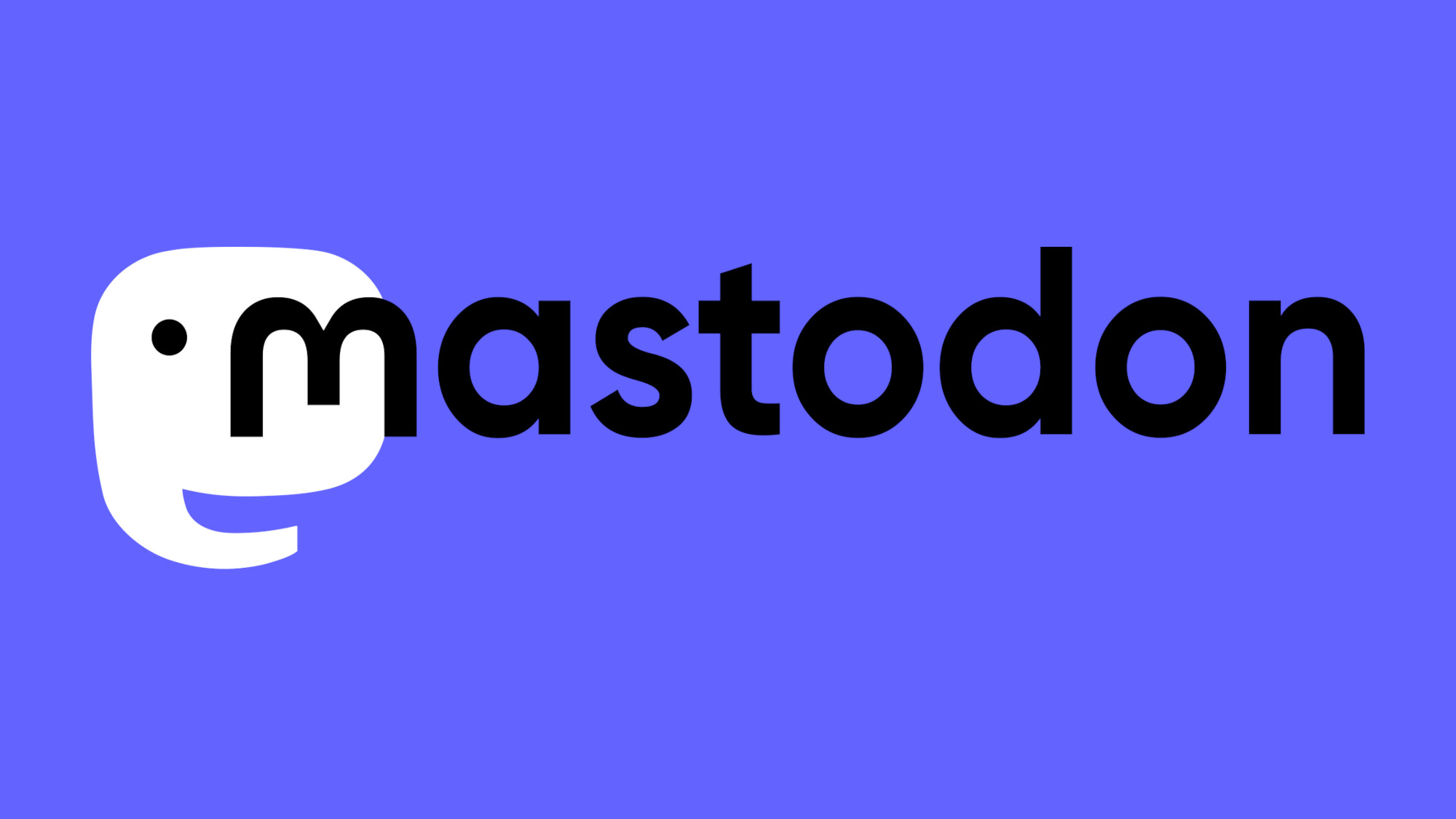What is Mastodon — the hottest Twitter alternative explained
Here’s what you need to know about the decentralized social network

Elon Musk finally took over Twitter, to the dismay of more than a few of the social network's users. Whatever your opinion of the billionaire or his methods, Twitter has already started to change since the takeover, highlighted by Musk's plans to charge verified users $8 per month.
For this and other reasons, some people have decided to jump ship, abandoning Twitter. And now they might be seeking a viable alternative.
Enter Mastodon, an open-source, decentralized social network owned by the users, not a corporation. This platform has seen large growth in the last few weeks. We’re here to explain just what this service is all about, including how you can become a part of it. If you’re a heavy Twitter user, you might just feel at home.
Here’s what you need to know about Mastodon.
What is Mastodon?
Mastodon is a microblogging platform much like Twitter. It includes hashtags, user account search, tagging, media upload, and so on. The key difference is that Mastodon is decentralized, meaning that there is no one entity in charge of it as there is with Twitter.
Instead, there are user-operated servers that work both independently and interdependently. You can chat with people on your local server or talk to other users on different ones. It’s a lot more complicated than that — we’ll get to the Fediverse in a second — but that’s the gist.
Mastodon is open-source, meaning that anyone can look at the code, use it to make their own servers, or create their own forks. Funding is all crowdsourced. Mastodon features no ads and no algorithms. It focuses on providing a means to communicate and build a community without being controlled by a corporation.
Get instant access to breaking news, the hottest reviews, great deals and helpful tips.
Your feed works chronologically, so Mastodon shows posts in the order that they were posted. This is a mercy compared to other platforms like Instagram and Twitter’s default timelines, which use an algorithm to surface what the service thinks you want to see. While that can be useful, it can also be dangerous. Mastodon does away with all of that.
How does Mastodon work?
The beauty of Mastodon, and other platforms in the Fediverse, is that each server is owned and operated by users.
You might be wondering how this even works. After all, we’re used to platforms controlled by singular entities, like Twitter, Facebook, Instagram, YouTube and TikTok.
The beauty of Mastodon, and other platforms in the Fediverse, is that each server is owned and operated by users. You could even host your own Mastodon instance and control every singular aspect of your experience! (This option, however, will most likely cost you money, since you’ll need a dedicated server, which means a VPS for most people.)
Since there are no ads — most server admins forbid and ban ad accounts — Mastodon is entirely crowdfunded. You can donate to the overall project or to your server admin, or both. It’s a nice way of giving the community a buy-in, letting them be a part of some greater whole versus handing over money to yet another corporate entity.
Since there is no centralized network, Mastodon relies on the ActivityPub protocol to intercommunicate across servers. You don’t need to know how ActivityPub works right now, but just understand that it allows individual Mastodon servers to talk to each other, where users can chat and follow one another from the comfort of their own instance.
If this sounds like the Wild West to you, that’s because it kind of is. And that's the best part of Mastodon. With a platform like Twitter, there is one moderation scheme with a group who handles all of it. That’s not how it works on Mastodon. It’s up to the admins, and their appointed moderators, to police the servers. Each one has its own rules that everyone needs to follow, and its own penalties for violations.
To a degree, the users themselves moderate the server, too. Some will get quite upset if you go off topic (a concept we’ll address shortly), and others will come down on you for posting NSFW content improperly. Mastodon includes content warnings and spoiler blurs, which, in my experience, users are great about employing.
How do you use Mastodon?
There are official Mastadon mobile apps for both Android and iOS, plus a bunch of community ones like Tusky and Metatext. The Mastodon web app is also very good on desktop and mobile, with a multi-column, Tweetdeck-like UI available on the former.
You’ll find that joining Mastodon is quite a bit different than signing up for a Twitter account. First, you’ll need to find a server. Most are general and generic, meaning that you can talk about basically anything on them within the content rules. (Every server I have come across has a code of conduct that does not tolerate hate speech.)
Other servers are more topic-specific, like climate change, politics, FOSS, and so forth. Many of these prefer you to keep your posts relevant to the server's theme.

Once you find an open server you wish to join, you’ll pick your username and then it’s on you to find people to follow and talk to. You can search by hashtags for topics you’re interested in, or find people who catch your attention.
Mastodon has some rather large communities, too, like #astrodon, which is a great batch of people like astrophysicists and the like to follow if you love all things space and interstellar. I have found a lively philosophy community and, of course, a healthy bunch of accounts who are a part of the free and open source movement.
Using Mastodon is much like the nuts and bolts of the Twitter experience. Your posts are limited to 500 characters, you can upload media, add content warnings to keep your posts in line with server rules and community expectations, or start polls. The latter can be really fun to participate in, just like on Twitter.
If you want to share things privately to just your followers, you can. This will prevent the posts from going out to the local server and federated timelines. You can also block individual users or whole instances altogether.
Of course, don’t assume that everything is secret. Your private messages aren’t encrypted and server admins can read them, so Mastodon is no place to discuss sensitive information. If you want the utmost security for your conversations, stick to Signal.
What is the Fediverse?
We’ve hinted at it thus far, but Mastodon represents just a piece of the overall Fediverse. Fully explaining the Fediverse is outside the scope of this article, but basically, it’s a collection of different disparate services that can intercommunicate using the ActivityPub protocol we mentioned earlier.
For example, you on Mastodon could follow an account on the Twitch alternative Owncast or the YouTube stand-in PeerTube, even if the users on those platforms don’t have Mastodon accounts. Users on Mastodon’s cousin, Pleroma, can also talk to and follow each other, even though the services themselves are different and yet fill similar functions.
The Fediverse is the realization of a free and open internet. Like Mastodon, no one entity controls the whole thing. It’s in the hands of users.
Should you switch to Mastodon?

Don’t let Mastodon scare you. While its underpinnings might be outside of what you might be used to with centralized services, the user experience for Mastodon is very similar to Twitter. You could even argue it’s better in many ways. And as more people flock to the Fediverse, you’ll see these platforms grow, meaning there will be more users you can interact with.
The most complicated part about getting started with Mastodon is finding an open server that fits your needs. You can start from Mastodon’s list, which has more than 100 on offer at the moment. Once you find a server you like, you’re good to go.
Coming from Twitter, Mastodon feels remarkably like home, though it does have its own culture. We think you’ll fit right in, though.

Jordan is the Phones Editor for Tom's Guide, covering all things phone-related. He's written about phones for over six years and plans to continue for a long while to come. He loves nothing more than relaxing in his home with a book, game, or his latest personal writing project. Jordan likes finding new things to dive into, from books and games to new mechanical keyboard switches and fun keycap sets. Outside of work, you can find him poring over open-source software and his studies.
